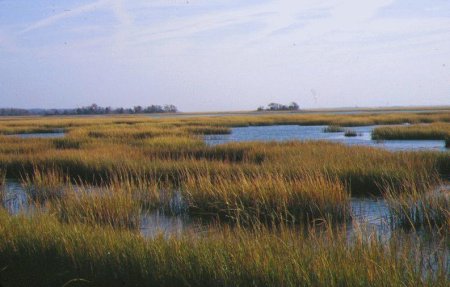 |
Lab Summary
|
Conceptual Learning Objectives - Upon completion of this lab, students should be able to
- discuss the interconnections between abiotic and biotic factors which shape an ecosystem.
- discuss the variety of ecosystem services produced by the marsh ecosystem and why they are essential to all life (including humans) on earth.
- test hypotheses about how biological and physical factors influence aspects of biodiversity.
- understand how species composition is affected by (and effects) physical parameters such as dissolved oxygen, soil structure and composition, salinity, and tidal disturbance regimes.
- appreciate the complexity of a seemingly homogeneous ecosystem like the salt marsh and its connections to other ecosystems.
Scientific Skills - in this lab students will
- learn field techniques for exploring physical and biological features of ecosystems
- field data recording
- develop skills in the use and care sophisticated sensor equipment in the field.